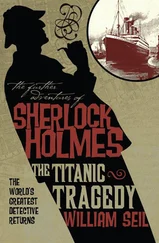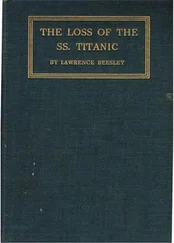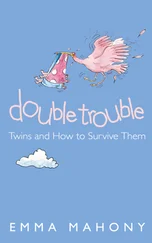At 8.30 a.m., when the lifeboats had all been accounted for, there was a roll call and the names of the missing became known. The expressions of grief were class-dependant: the women in first-class held themselves together with decorum while those in steerage wept. ‘When it seemed sure that we should not find any more persons alive,’ one of the Carpathia ’s stewards told the press, ‘the bedlam came. I hope never to go through it again. The way those women took on for the folk they had lost was awful. We could not do anything to quiet them until they had cried themselves out.’ 3Captain Rostron turned the Carpathia back in the direction of New York while the Californian stayed behind to search for bodies. One survivor told a reporter that: ‘While we were on the Carpathia we passed through a school of about a dozen whales and later on we passed a seal that was floating on a cake of ice. A little farther on we passed a big floe of ice on which there was a big white polar bear prowling around.’ 4
Ismay’s first action on board, according to one of the ship’s officers, was to take himself to the dining room and announce ‘I’m Ismay, for God’s sake get me something to eat.’ Having eaten, he then reportedly tried to pay the steward $2 before demanding a stateroom in which to rest. Mrs Lucien P. Smith, one of eleven brides to be widowed on her honeymoon, described him stepping onto the Carpathia shouting: ‘I’m Ismay! I’m Ismay! Get me a stateroom!’ ‘I know many women who slept on the floor in the smoking room,’ Mrs Smith said, ‘while Mr Ismay occupied the best room… being in the centre of the boat, with every attention, and a sign on the door, “Please do not knock”.’ But far from drawing attention to himself, Ismay wanted to get away from the others as quickly as possible. As hellish to deal with as the sinking of his ship was the expectation that he blend in with the brotherhood of Titanic survivors on the Carpathia. He disappeared long before the 8.30 roll call would have alerted anyone to his presence. At 7.30 that morning, Captain Haddock, commander of the Titanic ’s twin sister the Olympic, currently also crossing the North Atlantic, received a Marconigram from Captain Rostron informing him that ‘Mr Bruce Ismay is under an opiate’.
In a statement given to the US Senate inquiry, the longest and most detailed account of his actions he would make, Ismay gave his own version of what happened when he boarded the Carpathia.
I understand that my behaviour on board the Titanic and subsequently on board the Carpathia has been very severely criticised… So far as the Carpathia is concerned, Sir, when I got on board the ship I stood with my back against the bulkhead, and somebody came up to me and said, ‘Will you not go into the saloon and get some soup or something to drink?’ ‘No,’ I said, ‘I really do not want anything at all.’ He said, ‘Do go and get something.’ I said, ‘No. If you will get me in some room where I can be quiet, I wish you would.’ He said, ‘Please go into the saloon and get something hot.’ I said, ‘ I would rather not.’ Then he took me and put me into a room. I did not know whose room the room was, at all. The man proved to be the doctor of the Carpathia. I was in that room until I left the ship. I was never outside the door of that room. During the whole of the time I was in this room, I never had anything of a solid nature at all; I lived on soup. I did not want very much of anything. The room was constantly being entered by people asking for the doctor. The doctor did not sleep in the room the first night. The doctor slept in the room the other nights that I was on board that ship. 5
His defence of the privileged treatment he received — that his small room had not been sufficiently private and that he was continually interrupted — did little to soften the mood of the American public. ‘Ismay crawls through unspeakable disgrace to his own safety,’ wrote the New York American when the news reached land that the owner of the ship had survived. He ‘seizes hold of the best accommodation in the Carpathia to hold communion with his own unapproachable conduct’. Except that Ismay did not see his conduct as unapproachable. He did not feel, as he lay in his stateroom, that he had betrayed his better self or that a hairline crack in his character had appeared when he jumped into the lifeboat: As I lay in my stateroom on board the Carpathia, he said in the later inquiry, I went over every detail of the affair. There was nothing that I did that I am sorry for. I can truthfully say that my conscience is clear! 6
Ismay cut himself off from company at the best of times; it was his instinct to escape from a crowd. His father, who founded the White Star Line, had been a congenial man who, when on board his own ships, spent his days with the Captain on the bridge and his evenings with the better class of passenger. But when Ismay crossed the Atlantic he preferred to be alone in his cabin looking over papers and reports. He felt no common ties; he was disconnected from whatever it was that bound people to one another. On the Carpathia he did not ensure that a list of the surviving crew was sent to their increasingly desperate families in Southampton (90 per cent of the ship’s crew were born or lived in the port), or inquire after the comfort and welfare of the surviving passengers. In an article in the National Magazine which appeared the following October, Marie Young, a first-class American passenger, described how ‘the President of the White Star Line — hidden in the English physician’s comfortable room… voyaged to New York as heedlessly indifferent to the discomfort of his Company’s passengers as he had been to the deadly peril that had menaced them’. On the Titanic, Ismay was the only man, apart from the Captain, the ship’s designer, Thomas Andrews, and the Chief Engineer, Joseph Bell, who knew that the ship would be at the bottom of the sea within two hours and that the available lifeboats could carry less than half of those on board, but he did not warn, or even try to find, Dr O’Loughlin, who had been his dining companion that evening, or Charles M. Hays, who was travelling as his guest, or Richard Fry, his valet of ten years, or George Dodd, his family’s former butler, now working as a steward in first-class, or Arthur Hayter, who had been his steward throughout the journey, or William Harrison, his secretary, all of whom were to die (‘How my husband loved his work,’ Harrison’s grieving widow later wrote to Ismay; ‘he was so proud of his position as a private help to you.’ 7) Other people held no reality for Ismay. It was only Marian Thayer, standing with her husband and son, who was told by him that the ship had an hour to live. 8
In The Loss of the SS Titanic: Its Story and Its Lessons, published later that year, Lawrence Beesley, a thirty-five-year-old Cambridge graduate, widower, and former science teacher at Dulwich College in London, described his own jump which took place, he explained, ‘under very similar circumstances’ to those of Ismay. Lifeboat 13 was in the process of being lowered and the call for women and children had been repeated. ‘Just then one of the crew looked up and saw me looking over. “Any more ladies on your deck?” he said. “No,” I replied. “Then you had better jump”.’
Beesley, a Christian Scientist who was on his way to ‘study the greater work in New York’, felt no guilt about leaving the ship; the moment of his escape rather served as an epiphany which left him with a visionary sense of purpose. In an article for the New York Times, which appeared on 29 April, he defended Ismay’s actions and described how ‘the moment I realised there was any danger I turned at once to the method and habit which are incumbent on a Christian Scientist — the attempt to eliminate fear from the human mind’. This enabled him, Beesley believed, to ‘stand quietly on the deck and watch boats being lowered until the moment came when I was able to get a place… without depriving anyone of room’. In another article written in December that year for the Christian Science Sentinel, Beesley described how he recalled, as the ship was sinking, ‘the spiritual sense of the ninety-first psalm — to “be still, and know that I am with God”’. In his stillness, Beesley expanded to absorb what he called ‘the magnitude of the whole thing’, soaking it up like a sponge. Not having lost any friends or family and fully covered by an insurance policy he took out at the last minute, Beesley’s most dominant emotion was gratitude; watching the Titanic go down he was overwhelmed by the ‘many things to be thankful for’, and he renewed his pact with his maker. He became attuned to being alive; from now on he resolved to live with increased intensity. He also resolved to record the experience. While he was on the Carpathia, Beesley wrote a letter to the London Times ‘urging the taking of immediate steps to insure safety of passengers and pointing out as dispassionately as possible the reasons for the disaster’. Hearing about the document from Officer Lightoller, Ismay asked to see it. ‘I hesitated,’ Beesley recalled, ‘knowing that while it did not seek to affix blame, the deduction would be that there was blame attachable somewhere — where I did not know and I did not wish Mr Ismay to think we were planning to criticise either his officers or his company.’ Ismay read and returned the letter without ‘raising the slightest objection to it’.
Читать дальше












